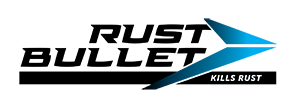Rust Bullet is a protective coating designed to provide superior corrosion resistance. However, exposure to chemicals like fertilizers and lime can affect any coating over time. Here’s a general idea of how these substances might interact with Rust Bullet:
- Fertilizers: Many fertilizers contain chemicals such as ammonium nitrate, potassium chloride, and urea, which can be corrosive. Continuous exposure to these chemicals might degrade the coating, especially if the fertilizer is highly acidic or alkaline.
- Lime: Lime (calcium carbonate or calcium hydroxide) is less likely to be as aggressive as some fertilizers, but it can still affect the coating over time, particularly if it is frequently in contact with the coated surface.
If the coated surface will be frequently exposed to these harsh chemicals, it is recommended to apply an additional topcoat for added protection. A properly applied and cured Rust Bullet coating (Rust Bullet Industrial) with a DuraGrade Clear topcoat will hold up extremely well to fertilizer and lime. For the best results, apply thin even coats of Rust Bullet Industrial to achieve the minimum dry film thickness (DFT) of 12 mils (four coats) and two to three coats of DuraGrade Clear as a topcoat. A regularly scheduled inspection and maintenance program is recommended for all harsh environments, allowing for immediate identification and repair of any breaches or imperfections in the coating.
